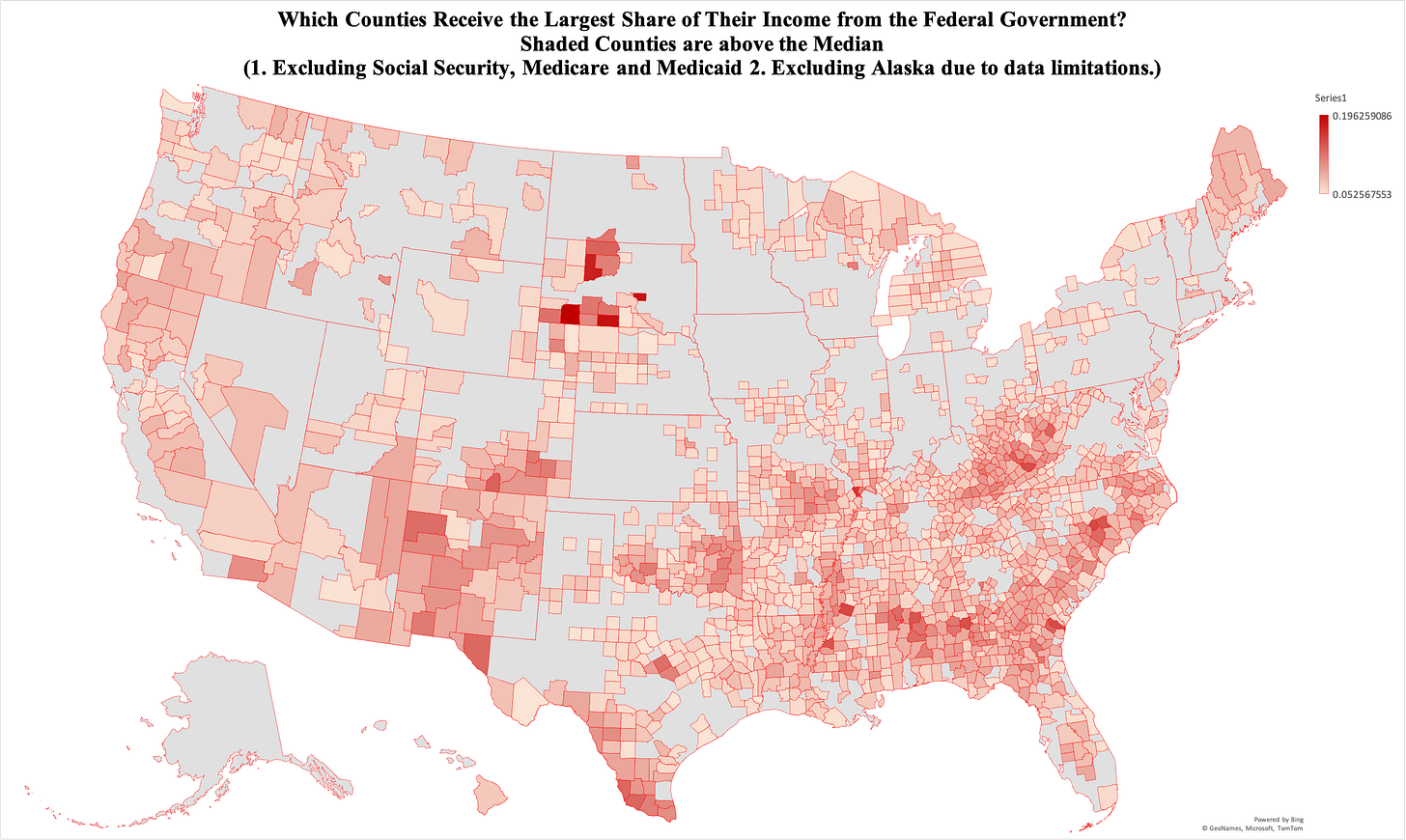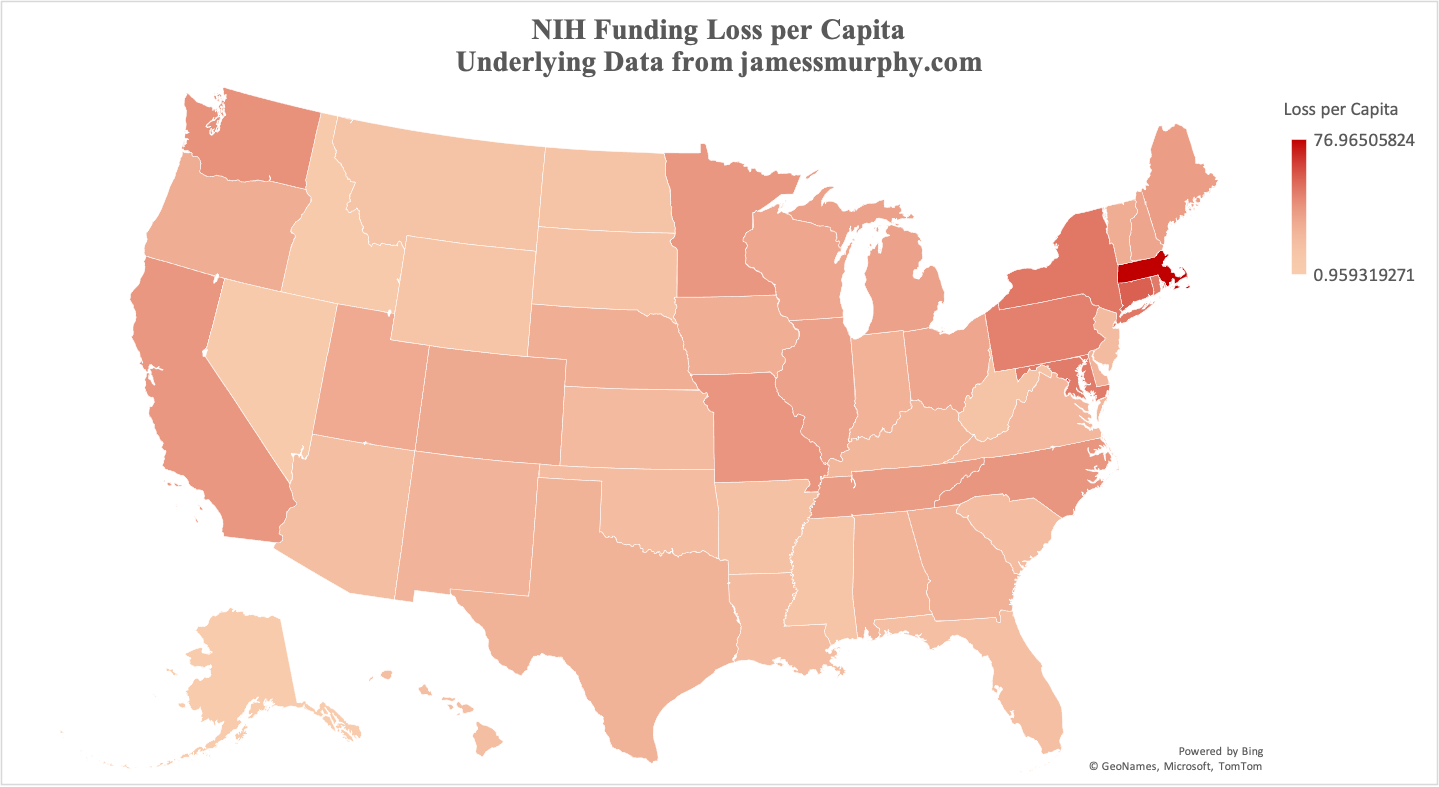Ya don’t know what ya got ‘til it’s gone.
The potential boomerang of Musk’s DOGE defunding rampage.
Lilian Salerno described her job as “one unglamorous road trip.” She worked in Rural Development at the US Department of Agriculture (USDA) and provided subsidized loans to small businesses and farmers throughout small town America. As she travelled about the country, she often was struck by how many people were surprised she worked for the federal government. The loans she provided through the USDA were funded and processed through local banks. Many loan recipients were unaware that they had only received their loan because of a federal government program. In his book, The Fifth Risk, Michael Lewis recounts the story of one surprised customer meeting Lilian and his realization that he was the beneficiary of a federal loan program.
The story involves, as Lewis wrote, “a government shade-throwing, Fox News-watching, small town businessman” who was receiving a USDA Rural Development loan – but he thought it was just a loan from his local bank. When this man received his loan check there was a small ceremony with local reporters in attendance covering the project that was being funded. Lewis recounts former US Secretary of Agriculture Tom Vilsack’s describing the ceremony: this businessman is “telling the reporter how proud he is to have done it on his own… The USDA person goes to introduce herself [to him] and he says ‘who are you?’” After the ceremony “he asks ‘what are you doing here?’, She says, ‘Well sir, [the USDA] supplied the money…’” He was shocked. Until that moment he was completely unaware that he was a beneficiary of a subsidized federal government program.
In recent days Elon Musk and his DOGE team have been running around Washington, DC defunding parts of the government. They intend to eliminate waste and inefficiency - laudable goals - but in reality it seems they are simply slashing any program that seems too ‘woke’ or doesn’t align with President Trump’s agenda. How else does one explain cuts to PEPFAR which is one of history’s greatest public health success stories having saved 25 million lives. The US Agency for International Development was almost shuttered and thousands have been targeted for termination across the federal government. To all eyes DOGE is a slash and burn program and not a surgical intervention at the margins of government inefficiency.
With these happenings, it is a good time to take a look at a few examples of how important the US Federal Government is to the nation’s economy and where some of the money that DOGE may target lands across the country. Many areas of the country with large numbers of Trump and DOGE supporters should be careful about what they wish for – the federal government deeply supports much of “red America.”
As of 2022 the average person in the US received about 18% of their income from a direct federal government transfer. These transfers include social security, Medicaid, Medicare, benefits from Veterans Affairs, SNAP, Supplemental Security Income (SSI) for people with disabilities and low income seniors, and the Earned Income Tax Credit. It also includes education support such as Pell grants and a variety of other smaller assistance programs.
Recently, the Economic Innovation Group (EIG) added up all personal income within each county within the US and then calculated the share of that income that was received as a direct federal government transfer. Surprisingly, more than half of all counties in the US receive greater than a quarter of their income directly from one of the federal government programs listed above. Great variation exists in this distribution. For instance, the people of Teton County, Wyoming receive less than 2% of their income from federal transfers while Owsley, Kentucky receives over 63%. (Data from Economic Innovation Group.)
Likely, some of these programs are off limits for cuts even by the standards of the Trump administration. I don’t expect that they will touch Social Security and Medicare. Medicaid would be a contentious cut as well but there may be adjustments should the Affordable Care Act be amended. Outside of these three, the other programs could be on the chopping block – at least in part.
The figure below displays the counties that are above the median in terms of federal government transfers excluding Social Security, Medicare, and Medicaid. Many of the counties receiving the largest transfers, as a share of their total income, cut directly across many strongly Republican counties.
Many Democratic counties are highlighted too. Cuts to these programs wouldn’t harm Democrats at the exclusion of Republicans or vice versa. In fact, there is almost no difference in the average share of income received from government transfers in counties won by President Trump versus those he lost. Reductions in funding within these programs would cut across the country without notice of party affiliation.
What about some programs that DOGE has touched or is targeting? The Washington Post reported last week that the US government buys $2 billion of food from US farmers each year, much of it is distributed through USAID. If the government cuts this program that will create a reduction of about 1% in revenues for US farmers. That is going to hurt an industry that employs 22 million people in the US (10% of all US jobs). A cut of that magnitude is going to be noticed far and wide across the economy.
One of the past week’s largest controversies in academic and medical circles concerned the newly announced limit on indirect costs of grants from the National Institute of Health (NIH). Indirect costs cover a large range of items. The best way to think of them, in brief, is that they encompass underlying aspects of a university or independent research facility that allow them to conduct research. Indirect costs pay for things like space for labs, computer infrastructure, and accountants to manage the grant funding, to list just a few items. Cuts to this underlying research infrastructure mean that some medical research will not be done or will need to be postponed. How are these cuts distributed across the country?
Some states with intensive research facilities at large universities will lose hundreds of millions of dollars. California will lose $804 million. New York will lose $632 million. Again, the cuts aren’t isolated in Democratic strongholds. Texas will lose $310 million and Tennessee and Missouri will lose over $130 million each.
This isn’t money that simply disappears and has no effect outside of the institutions that receive less funding. Some people will lose jobs or have hours and benefits cut. Some research projects will become unfeasible. With those lab closures some graduate students will lose their ability to complete their degrees and won’t become qualified to complete future health research that may save lives in the US and across the world. Again, these cuts are going to hurt both Republican and Democratic areas. You can see this more prominently when you adjust the funding cuts to a per capita basis. You can’t clearly separate red from blue America in the NIH funding cuts.
The US Department of Education (DOE) is another target of the Trump administration. DOGE hasn’t arrived yet but they’re coming soon. DOE supports wide ranging programs across the country. The Title I program supports schools with large low-income enrollments with $18 billion of funding. Many of the schools supported by the program are located in areas dominated by Republican voters. The department also allocates $14 billion for 7.5 million children in special education programs. Special education is as bipartisan as it gets.
The DOE also supplies $24 billion each year under the Pell grant program which supplies money that allows children from low-income families to attend college. Over 31% of undergraduate students at two-year and four-year colleges in the US receive a Pell grant. The Department of Education oversees the nation’s student loan program. Over 28% of undergraduate students receive a government subsidized student loan each year. If these loans were to be cut at DOE, the private loan market, with higher fees and interest rates, likely would pick up a portion of the slack. But, that move would overwhelmingly harm students from low income families and prevent thousands of talented low income students from attending college.
Every one of these programs has a larger impact than is seen directly. The small business loan from the USDA not only helped a businessman to make it, it also created jobs in the local economy. Students attending college provide a high skill labor base that benefits everyone in terms of encouraging a robust economy. Cuts to medical research facilities take away jobs directly and also harm the rest of the economy when a lost job prevents a family from buying goods at local stores and meals at local restaurants. These effects are especially important when these facilities support a large portion of a local economy. For instance, Alabama Senator Katie Britt, normally a staunch supporter and ally of President Trump, has spoken out about the damage of the NIH cuts in Alabama. She recognizes the harm that will be inflicted to Alabama’s largest public employer, the University of Alabama Birmingham (UAB), which contains a major medical center, and employs 28,000 people across the university and its affiliated medical facilities. It has been estimated that UAB contributes $12.1 billion to the state of Alabama. The impacts of these cuts are going to be felt far and wide, even by people like Lilian Salerno’s clients who have no idea that they benefit from federal government programs.
Troy Tassier is a professor of economics at Fordham University and the author of The Rich Flee and the Poor Take the Bus: How Our Unequal Society Fails Us during Outbreaks.








